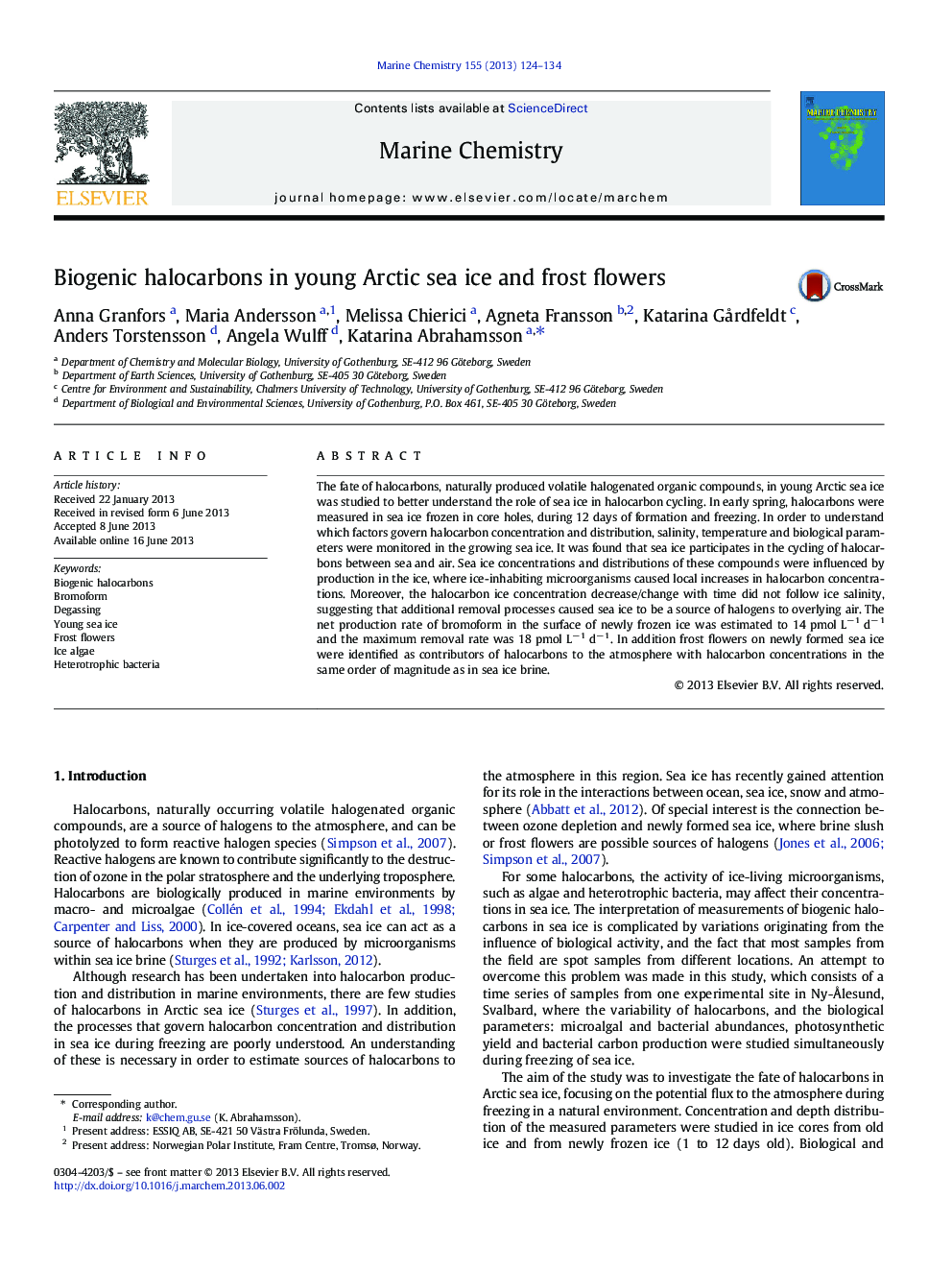| Article ID | Journal | Published Year | Pages | File Type |
|---|---|---|---|---|
| 7699715 | Marine Chemistry | 2013 | 11 Pages |
Abstract
The fate of halocarbons, naturally produced volatile halogenated organic compounds, in young Arctic sea ice was studied to better understand the role of sea ice in halocarbon cycling. In early spring, halocarbons were measured in sea ice frozen in core holes, during 12 days of formation and freezing. In order to understand which factors govern halocarbon concentration and distribution, salinity, temperature and biological parameters were monitored in the growing sea ice. It was found that sea ice participates in the cycling of halocarbons between sea and air. Sea ice concentrations and distributions of these compounds were influenced by production in the ice, where ice-inhabiting microorganisms caused local increases in halocarbon concentrations. Moreover, the halocarbon ice concentration decrease/change with time did not follow ice salinity, suggesting that additional removal processes caused sea ice to be a source of halogens to overlying air. The net production rate of bromoform in the surface of newly frozen ice was estimated to 14 pmol Lâ 1 dâ 1 and the maximum removal rate was 18 pmol Lâ 1 dâ 1. In addition frost flowers on newly formed sea ice were identified as contributors of halocarbons to the atmosphere with halocarbon concentrations in the same order of magnitude as in sea ice brine.
Related Topics
Physical Sciences and Engineering
Chemistry
Chemistry (General)
Authors
Anna Granfors, Maria Andersson, Melissa Chierici, Agneta Fransson, Katarina GÃ¥rdfeldt, Anders Torstensson, Angela Wulff, Katarina Abrahamsson,
